"Our neighbour is not going anywhere". How Kharkiv residents are adapting to the war
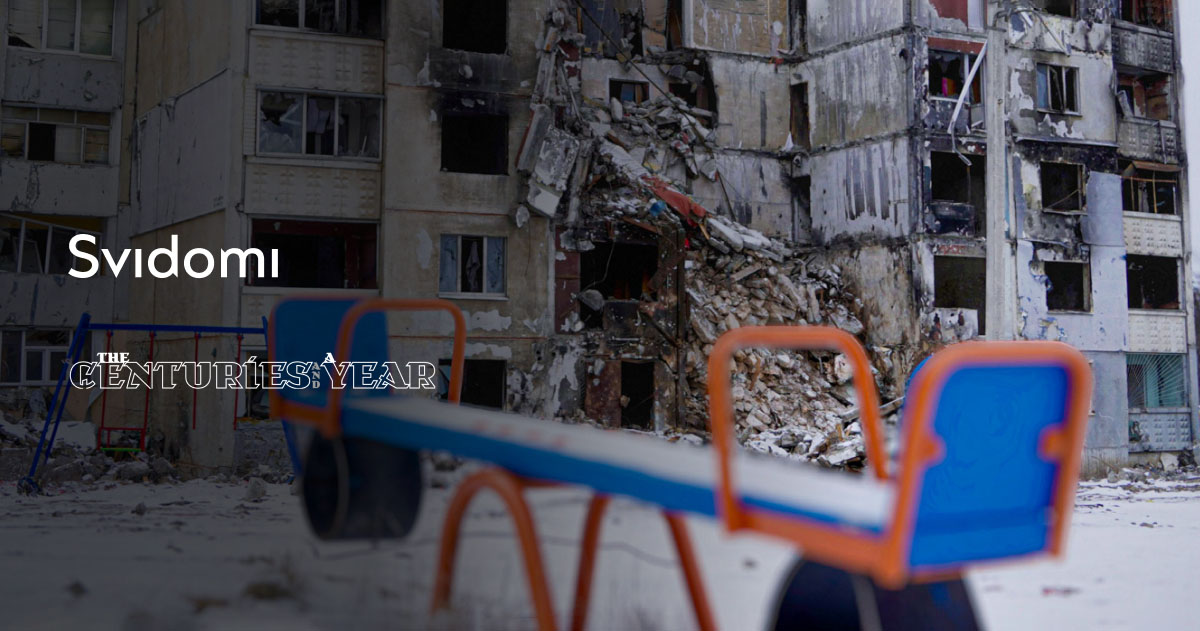
"After Pivnichna Saltivka, go to the centre and take a walk," says a man I meet on the tram.
"I've already been there."
"No, you don't understand. You are still young; you have a whole life ahead. Listen to me: go to the centre, take a walk, go to a cafe, look at the people - you need to take your mind off the destruction. If you think about it too much, you will have nightmares."
Serafim comes from the Caucasus, but he does not name the country. He says he moved to Kharkiv in 1976 when he entered the School of Economics of V. N. Karazin Kharkiv National University. He offers to take a picture of his nephew.
Pose for a picture and say, 'Ukraine will win,'
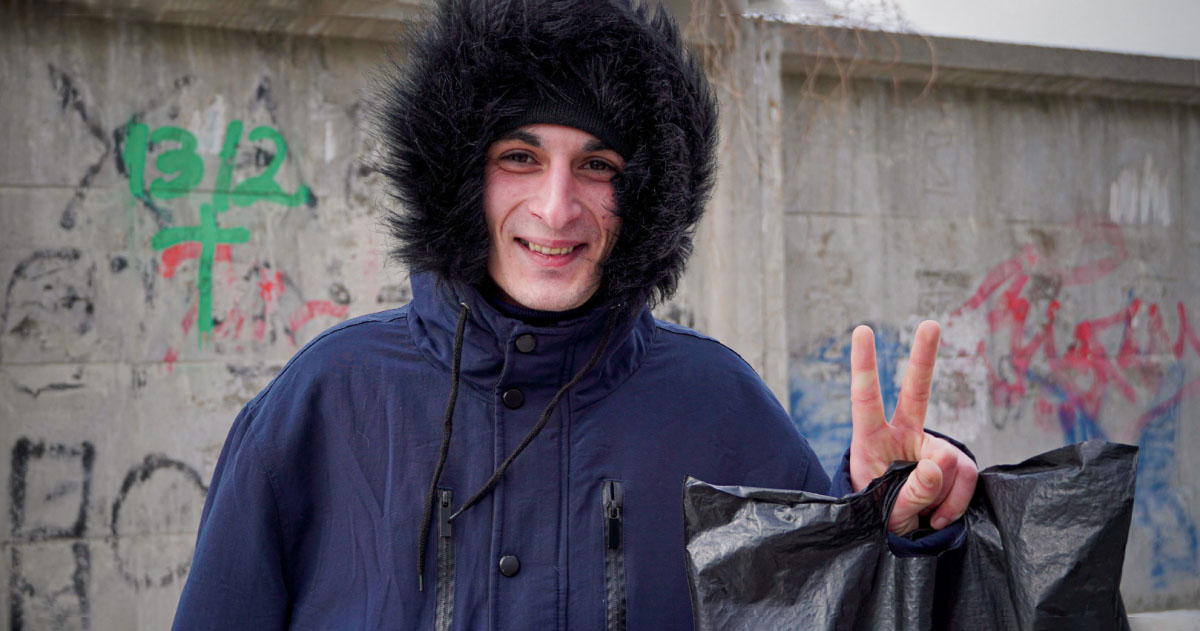
the uncle orders.
At the bus stop, a pensioner is lonely, waiting for a bus to Saltivka. He says that he and his wife returned after the Russians retreated. His son is at the front line, and his daughter-in-law and granddaughter have left.
"Fortunately or unfortunately, my house is not destroyed," the man says.
The further north we go, the more often we see taped windows. The farther north we go, the fewer people are left in the transport.
Northern Saltivka is the residential area of Kharkiv that has been most affected by Russian shelling. It is about 30 kilometres from the border with Russia and less than five kilometres from Tsyrkuny, a village under Russian occupation until May. The area suffered its first destruction on February 24; there is not a single building that does not bear traces of the war.
It's eerily quiet in the area. This silence is hard to accept when you move around the site lined with high-rise buildings. Before the Russian shelling, about 300 thousand people lived here. Now you can only hear the wind blowing through the houses with broken windows, the sound of tools, the hum of cranes, and the shouts of utility workers.
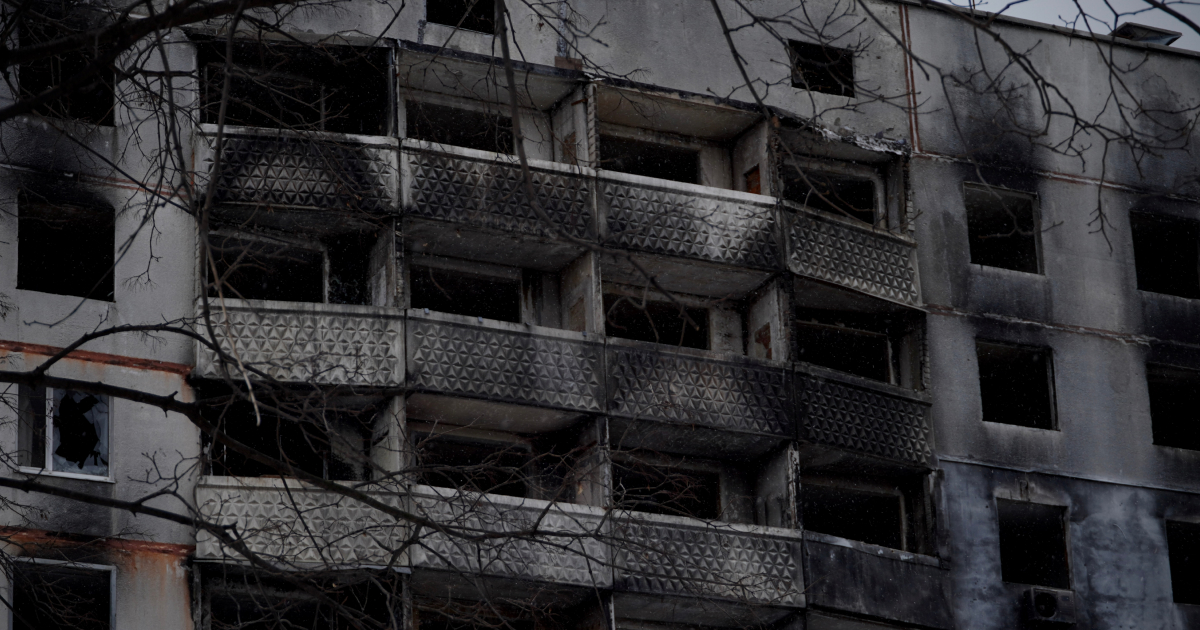
Natalia Uzhvii Street is the last street in the neighbourhood, with the ring road and the administrative boundary of Kharkiv behind it. The sixteen-story building No. 82 is one of the most damaged — a Russian airstrike hit it in early March. One of the entrances is beyond repair. There are still things that have flown out of the house: clothes on the trees, toys. There are flowers on a slab in front of the building in memory of those who died.
For about twenty minutes, I look around as a group of people approaches. Olha, a resident of Saltivka, is showing her non-local friends the destruction. She says that she first evacuated but returned home on May 17. She notes that even though it is winter, there are many more people in Saltivka. Locals started returning more actively in early October after the Ukrainian military de-occupied the areas of the Kharkiv region.
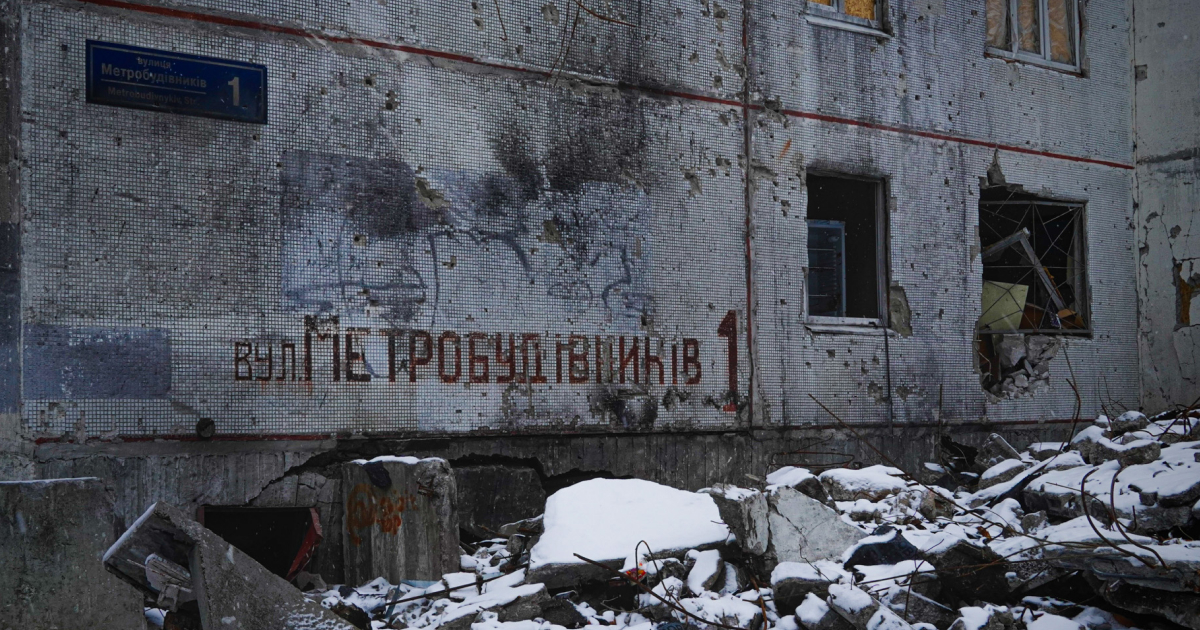
Go to Metrobudivnyky; there is also a lot to see,
says Olha's friend.
Metrobudivnyky is a neighbouring street where, like in Natalia Uzhvii street, there are no intact houses left. A man stands near one of the destroyed entrances. Oleksii looks at what's left of his apartment; the Kharkiv resident has moved to another street.
"I found it when the military was here, and there was shelling. Coming here for the first time was scary in March or April. Every other house was on fire; everything was black".
Now it's not scary anymore. Should we run somewhere? Where? You can't run away from fate,
the man says.
There are ten other people in the house where Oleksii lives now. In the one we are standing next to, there are fifteen people; in the summer, there were twenty-seven people. There is no heating, water or electricity. In the evening, the local says, the area is enveloped in pitch darkness.
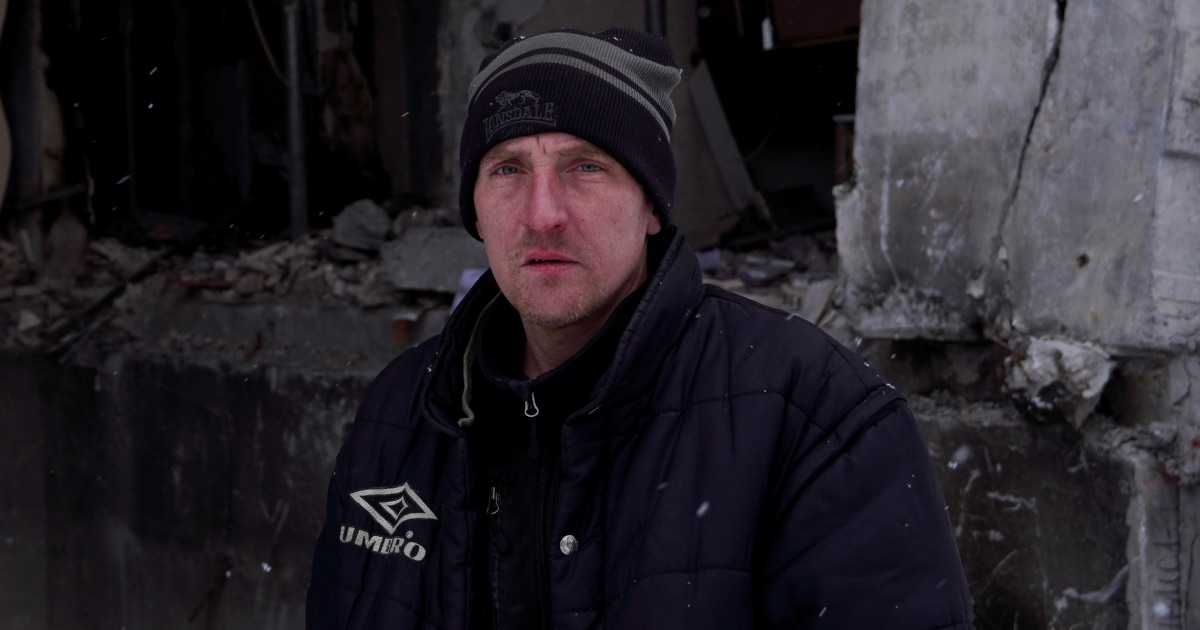
I notice a building painted with flowers - it's a destroyed kindergarten. The gate to its territory is not locked. The windows have not yet been closed. Through them, I can see the children's lockers open, torn wallpaper, and wall posters. There is a sign at the entrance:
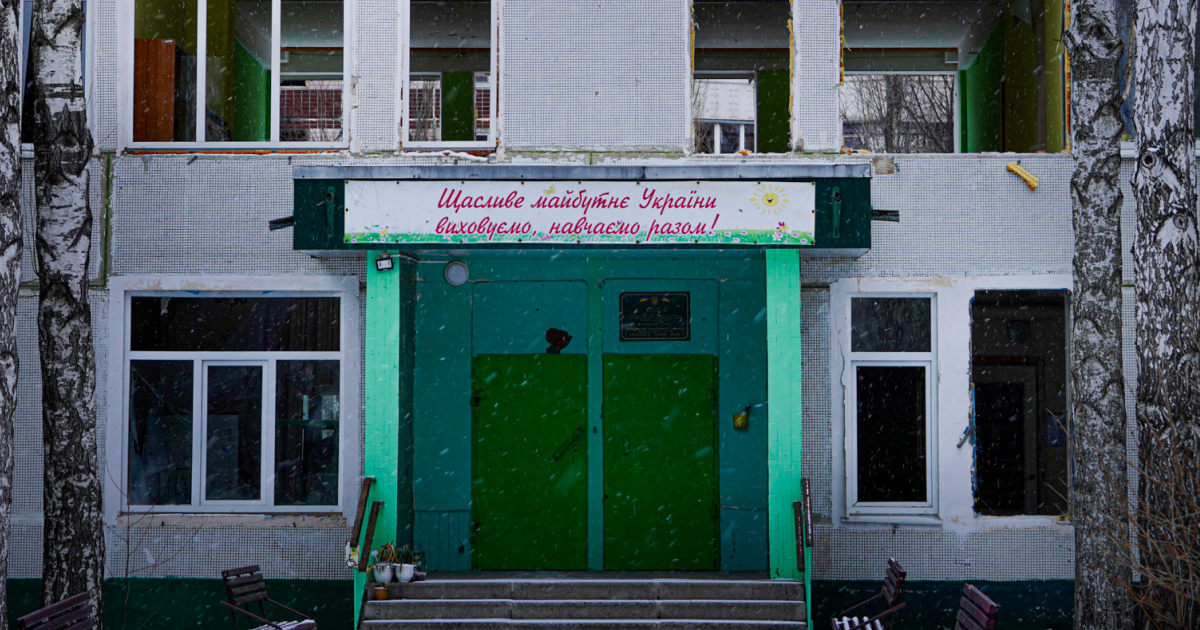
We Educate and Train Together. Ukraine's Happy Future!
Most often, you can meet utility workers in Pivnichna Saltivka. They dismantle rubble, install window chipboards, and clean the yard. In addition, construction cranes are working in different parts of the neighbourhood.
"Don't film us. Instead, take pictures of Zoia; she's been travelling with us from neighbourhood to neighbourhood for six months now," says a group of men next to a wooden figurine in a straw hat. Zoia is holding an assault rifle, a Ukrainian flag is next to her, and a coat of arms is painted on the wall with construction foam.
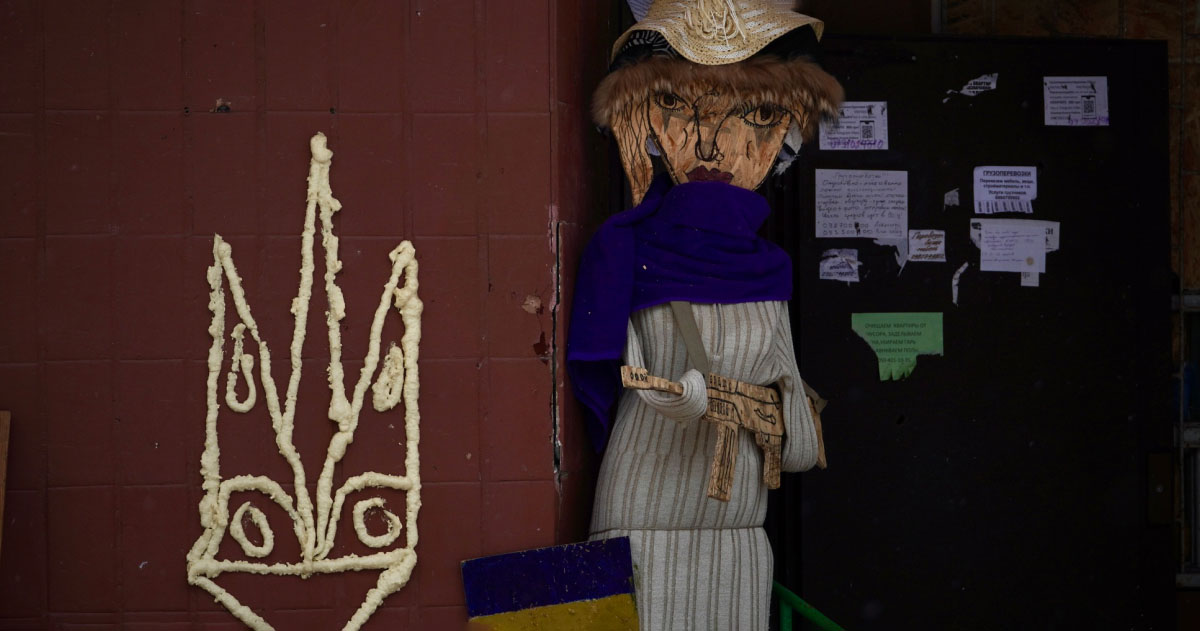
No one lives in the house they are cleaning. Sometimes the owners of the apartments come to pick up the things that have survived. A little further away, they install wood slabs where the windows should have been. They say they need to close everything to prevent snow from getting inside and the buildings from collapsing.
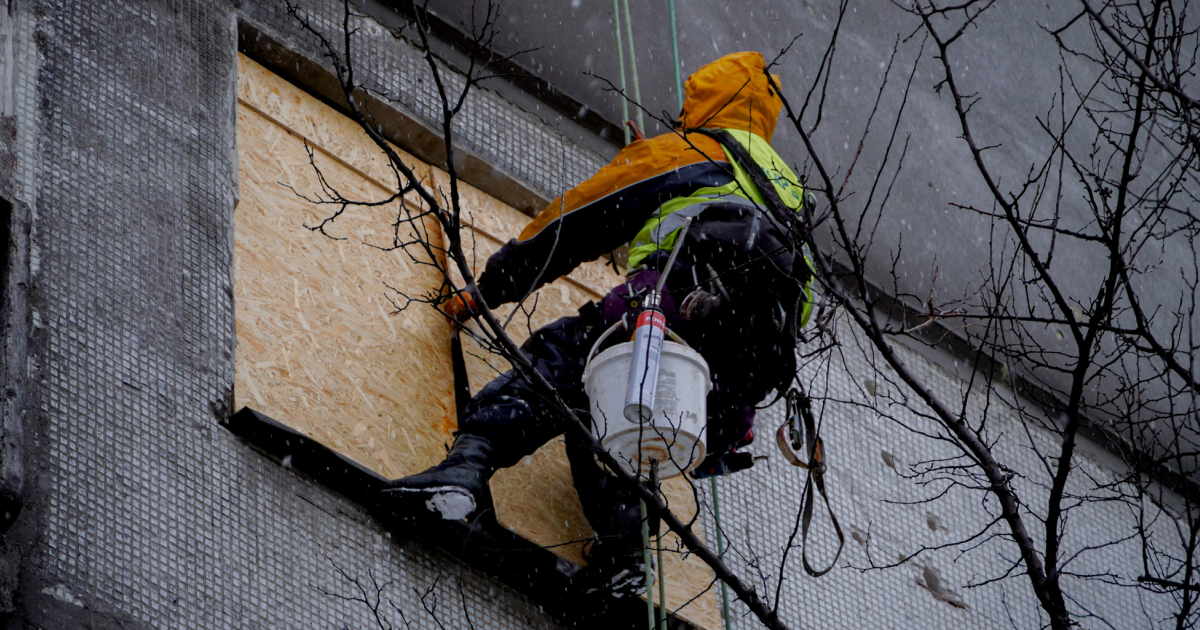
I ask the utility company what will happen to the houses in the neighbourhood — they say they will restore them. Earlier, the former Deputy Head of the Office of the President, Kyrylo Tymoshenko, said that many houses would have to be demolished and new ones built. The architectural studio EgoHouse even proposed a detailed plan to reconstruct Pivnichna Saltivka. However, it is too early to plan anything while the war is ongoing.
They will rebuild, but will it end? The Russians are not going to disappear,
says a neighbourhood resident with whom I walk through the school, which has also been shelled.
The Kharkiv residents who founded the SKHOV [SHELTER - TN] project believe the same. Before the full-scale war, the men were engaged in manufacturing metal structures. After February 24, they stayed in Kharkiv and realised that basement shelters were uncomfortable and rarely safe. So they created an initiative, the main idea of which is to have a fully autonomous dwelling, protected from any external factors, where you can feel at home.
The project was launched in July. Since then, they have been improving the technical aspects and manufacturing the first shelter. They say that it will take about a month to make one such shelter once the product is established.
The bunker can withstand a heavy artillery strike. It will be separated from the ground by three meters of soil and a solid monolithic reinforced concrete slab. The metal structure will be installed in a pit on a concrete foundation. All elements of the storage facility are made of steel and hermetically welded.
"We plan to work all over Ukraine. The customer can use the shelter in two weeks if the structure is available. This is a significant advantage over concrete shelters, which take several months to make at the customer's site," say the co-founders of the storage facility, Oleksandr Chyrva and Timur Feizulaev.
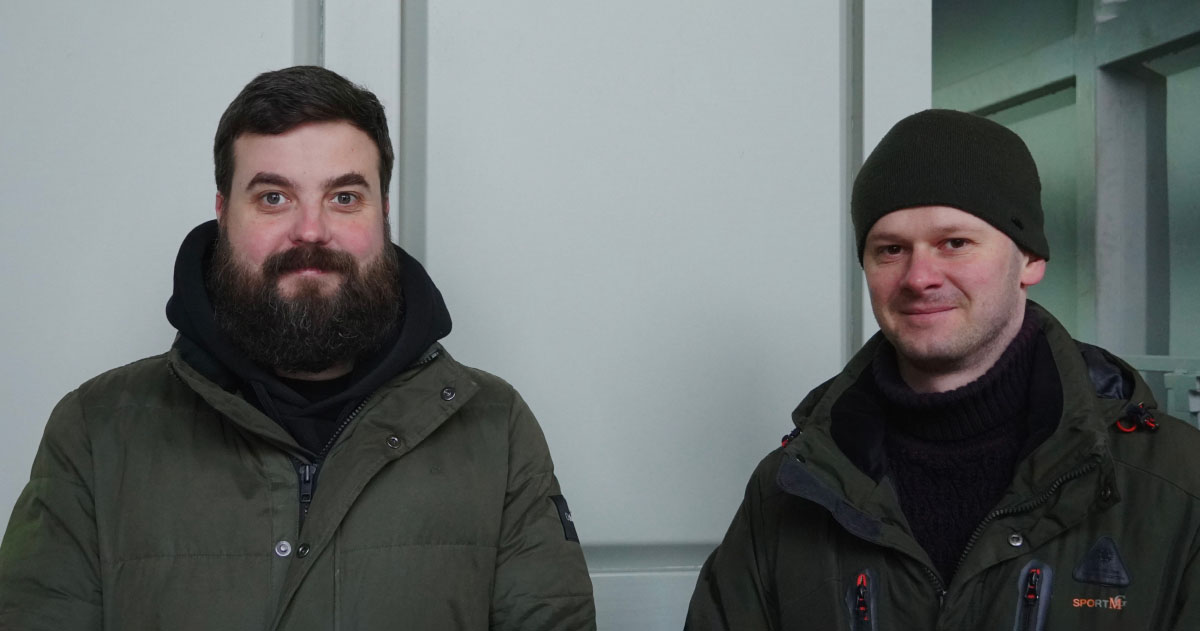
The SKHOV team performs a complete cycle of installation of the shelter and its connection to life support systems: ventilation, water and electricity. A backup evacuation hatch is provided in case of damage to the main exit. The shelter has a generator and a fuel supply. If there is water and food, you can live there for a long time without going outside.
You can pre-order a shelter right now by contacting the SKHOV website.
"Even after the war, the concept will be relevant — our neighbour is not going anywhere. There is an example of the United States, where there was no war, but for more than 50 years, it has been a popular product. It's like a vaccination: when the disease is already progressing, and an epidemic has begun, no one wants to get vaccinated, and when it's over, people go to get vaccinated. When the war is over, people will gather their thoughts, accumulate resources and start organising," the SKHOV founders say.


